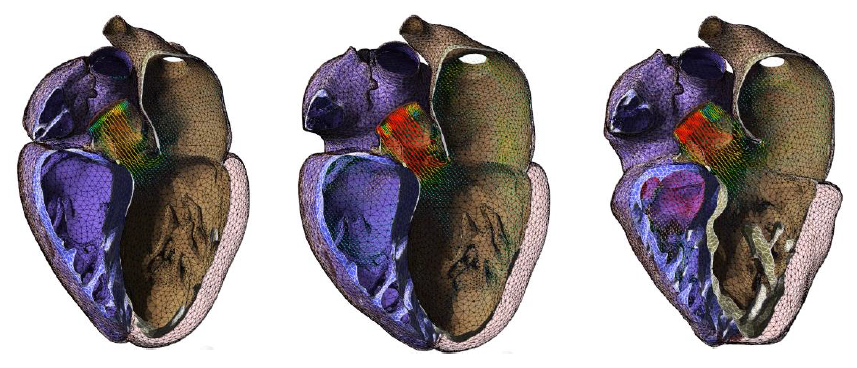Cardiovascular disease is the leading cause of death in developed countries and continues to drive significant research aimed at improving diagnosis and treatment. In cases where therapeutic medical device intervention is warranted, it is important to account for device-heart interaction over both the short and long term. In the short term, cardiac motion can significantly impact device stability and performance (as in the case of artificial heart valves), while over the long term, modified blood flow patterns may lead to structural remodeling that can have adverse effects on cardiovascular function. Computational tools used for device design, sizing, and placement must therefore be able to account for cardiac/vascular tissue mechanics, blood flow, and the interaction between them. Moreover, such tools must allow for patient-specific modeling and provide interactive visualization capabilities that can support clinical decision-making and reduce operator error.

Blood flow velocity at different time points in the FSI simulation
In this paper, we describe a methodology for bidirectional fluid-structure interaction between the general purpose CFD code FlowVision and the SIMULIA Living Heart Human Model (LHHM), a dynamic, anatomically realistic, four-chamber heart model that considers the interplay and coupling of electrical and mechanical fields acting in concert to regulate the heart filling, ejection, and overall pump functions. The LHHM natively includes a 1D fluid network model capable of representing dynamic pressure/volume changes in the intra- and extra-cardiac circulation. In the current work, we first replace this network model with a full 3D blood model (solved in FlowVision) that provides detailed spatial and temporal resolution of cardiac hemodynamics driven by motions of the beating heart and constrained with appropriate time-varying boundary conditions derived from the literature. After validating this approach, we activate bidirectional coupling between the blood flow CFD model and the LHHM electromechanical model using the SIMULIA co-simulation engine and discuss modeling details and results of interest.
Download "Fluid-Structure-Interaction in a Beating Human Heart Model" A. Aksenov, V.Pokhilko, A.Yushenko, B.Butz, P.Sridhar, K.D'Souza, W.Zietak